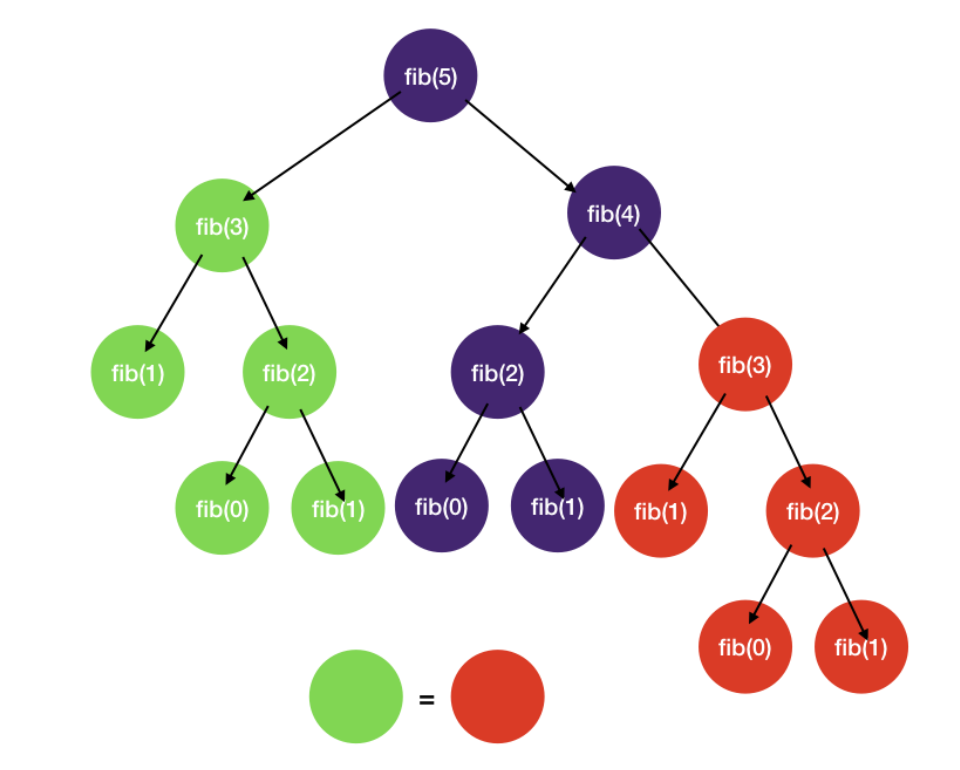Memoization is a simple concept – saving the previous function call result in a dictionary and reading from it when we do the exact same call again.
When to memoize: After you draw the state-space tree, if you see duplicate subtrees, then it might be a good time to consider memoization.
What to memoize: Think about the duplicate subtrees, what attributes do they share?
- In the Fibonacci example, the duplicate subtrees has the same
nvalue. - Usually, the
keyto thememois thestart_indexor anyadditional statesthat may appear multiple times during the recursion.
Time complexity: The benefit of memoization is that we store the obtained information in our memo so that we can access it in constant time.
- The time to do backtracking is proportional to the number of nodes in the state-space tree.
- However, with memoization, we avoid duplicate subtrees. Therefore the actual number of nodes visited is proportional to the size of the
memoarray. - For the above Fibonacci example below, the size of the
memoisO(n)(space complexity) and for each node we doO(1)work to combine the results from child recursive calls. Therefore the overall time complexity isO(n).
Fibonacci example
A classic example is calculating a Fibonacci number:
def fib(n):
if n == 0 or n == 1:
return n
return fib(n - 1) + fib(n - 2)This results in a lot of repeated computations:

The solution is simply saving previous results in a map of function arguments to results (the “memo”), checking it, and returning previous results if it has been done before. Otherwise, we carry out the computation and save the results in the map.
def fib(n, memo):
if n in memo: # check in memo, if found, retrieve and return right away
return memo[n]
if n == 0 or n == 1:
return n
res = fib(n - 1, memo) + fib(n - 2, memo)
memo[n] = res # save in memo before returning
return res